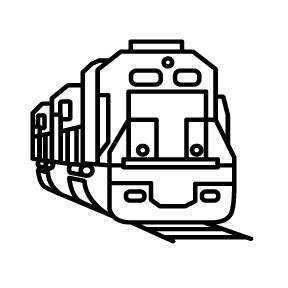Track-laying is still the focus of the limited trips to the train room. Now with most of the yard work complete (I now think of this as full-scale scenicking), I have more time to spend on the railroad.
I tried my hand and modifying some old Walthers / Shinohara turnouts I bought before I knew about power-routing and insulated frogs. I wasn't totally happy with the first turnout but the second one looked and worked a bit better. Like anything else in life: practice, practice, practice.
I also took some time to run the track bus under the layout to provide DCC power to the track. As track sections were laid, I dropped feeders down and connected to the bus with 3M IDCs (suitcase connectors). Then, I'd run a locomotive over the new section. This ensured everything was working properly and isolated any problems.
I'm using a home-brew DCC system called DCC++ which runs on an Arduino Uno. Combined with JMRI running on a Raspberry Pi, it makes for a very nice and inexpensive DCC setup. One important test I've been wanting to perform was how well DCC++ handled short circuits. While testing out a recently laid track section while another new section's adhesive dried under the weight of some quart paint cans, I applied the track power. I immediately heard a beep and the track power was cut off. I quickly discovered that the paint can had a metal bottom and was creating a dead short across the track. The impromptu test passed.
I had a really nice chat on the phone with Ken Patterson, the host of What's Neat, the monthly show produced for Model Railroad Hobbiest, the What's Neat This Week weekly video show and owner of Ken Patterson Photography. Ken works very hard producing great quality content for modelers. Plus, he's a heck of a nice guy!






